Lions are one of the world’s most beloved big cats. To many, lions are the King of the Jungle and are a dominant species with a powerful presence. Lions are native to Africa and India, inhabiting open grasslands and prairies. They are elite hunters and are considered a keystone predator, which means they have a large effect on the environment they inhabit.
Lions hunt and live in groups called prides, which can hold up to 2 to 40 lions. Unique in big cats, they display sexual dimorphism. Males can weigh up to 400 lbs and have large bushy manes. Females are much smaller weighing up to 270lbs but are the main hunters in the pride.
Large teeth, giant claws, a powerful bite, and elite hunting strategies make them one of Africa‘s fiercest predators. A lion’s bite force is powerful but not the strongest amongst big cats. Jaguars have a much stronger bite, but lions have the safety and power from their group. A lion’s bite is just one of the many impressive traits about this big cat. Their bite is powerful and helps it hunt, rip through flesh and take down prey much larger than itself.
What is a Lion’s bite force?
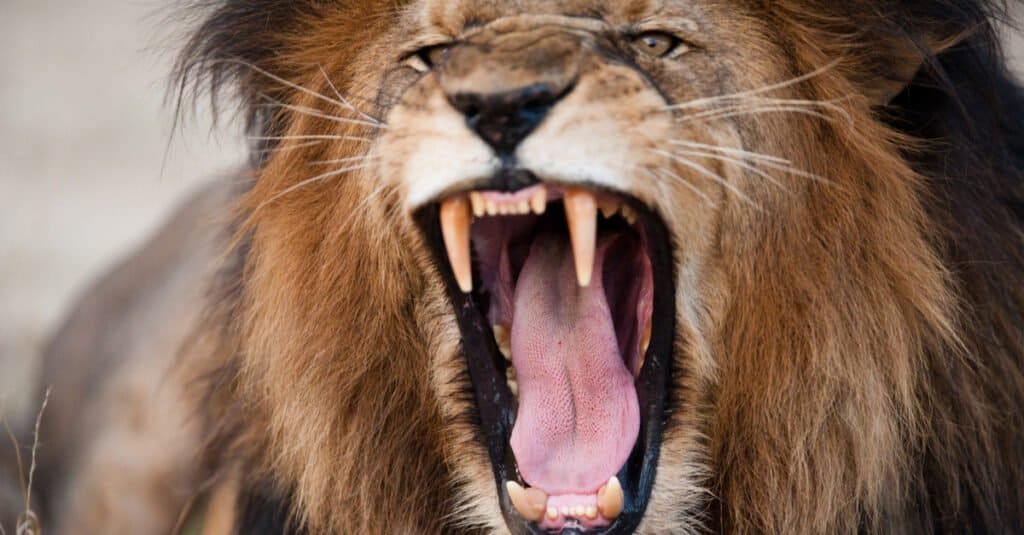
A lion can produce around 650 psi with its bite
©e2dan/Shutterstock.com
A lion’s bite force will depend on its age and size. It is a common belief that a lion is only able to produce around 650 psi with its bite. While Extremely strong, that is only 100 psi more than the dog with the largest bite force, the mastiff. As a lion grows and gets larger it will be able to create a more powerful force with its bite.
650 psi was measured in a sub-adult lion, aged between 2 to 3 years. Growth is different with each lion, and some may grow out of cub size and become sub-adults at 1 to 2 years of age. Some adult lions are able to produce around 1000psi with their bite. Males are larger than females, but females are the main hunters of this species. Males have a stronger bite and will join the hunt to take down large prey like an elephant.
What do Lions Eat?
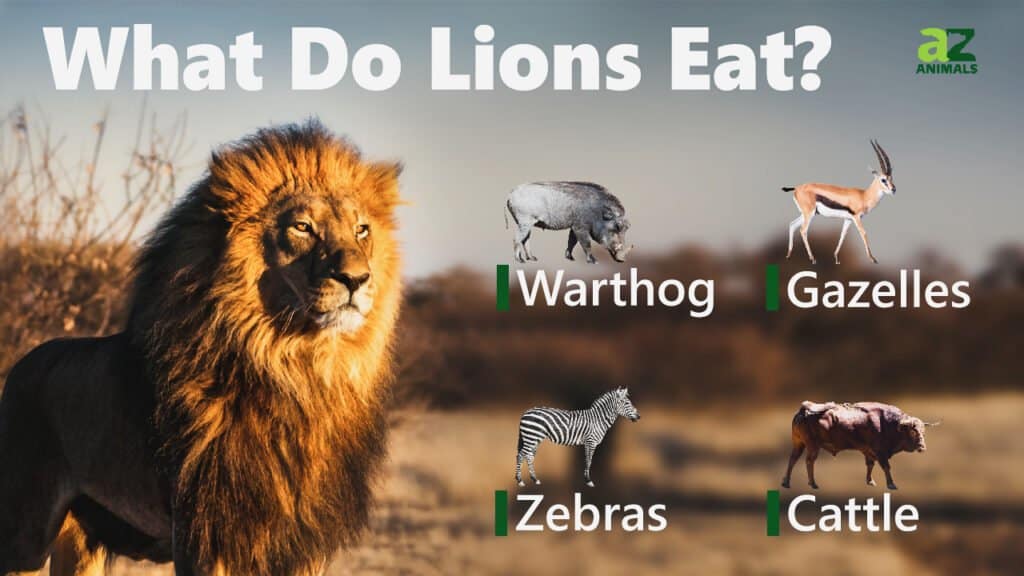
Lions need to have strong jaws to be able to kill and eat the prey they catch. Female lions do the majority of the hunting, and male lions will only hunt if needed. Lions feed off a variety of animals in Africa and need to be able to tear through thick skin and hides. Lionesses target the throat of an animal for an easy kill and other soft areas of the body.
Some animals lions eat are:
Not only are the prey they hunt large, but they also have extremely thick skin and hide which can be hard to get through. One example is the hippo, who has skin that is 2 inches thick. Lion’s powerful bite helps kill and consume species like this.
Type of Teeth A Lion Has
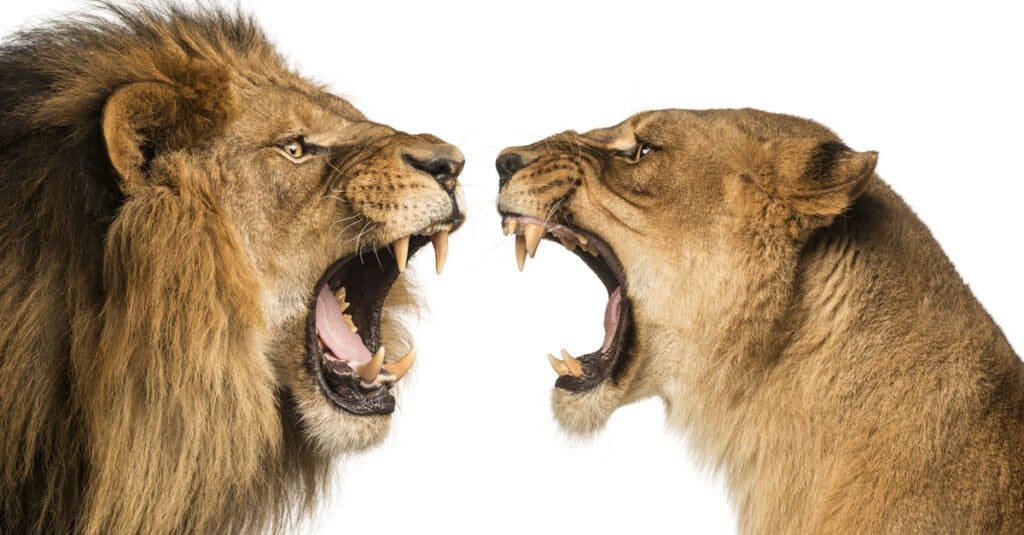
Two lions showing of their canines which help rip flesh
©Eric Isselee/Shutterstock.com
A lion’s teeth are one of its most important features that help them feed. Even with such a strong bite they still need help from canines and incisors to help rip through flesh. The three types of teeth that a lion has are incisors, canines, and carnassial teeth. As carnivores, their teeth are designed for eating and tearing meat.
- Carnassial Teeth: Modified molars at the back of a lion’s mouth that help shear and tear flesh
- Canines: A lions largest teeth, lions have four altogether on either side of their incisors to rip flesh and help kill prey
- Incisors: Smallest teeth in the front of their mouth that helps grip food and animals
Why Do Lions Bite Each Other?
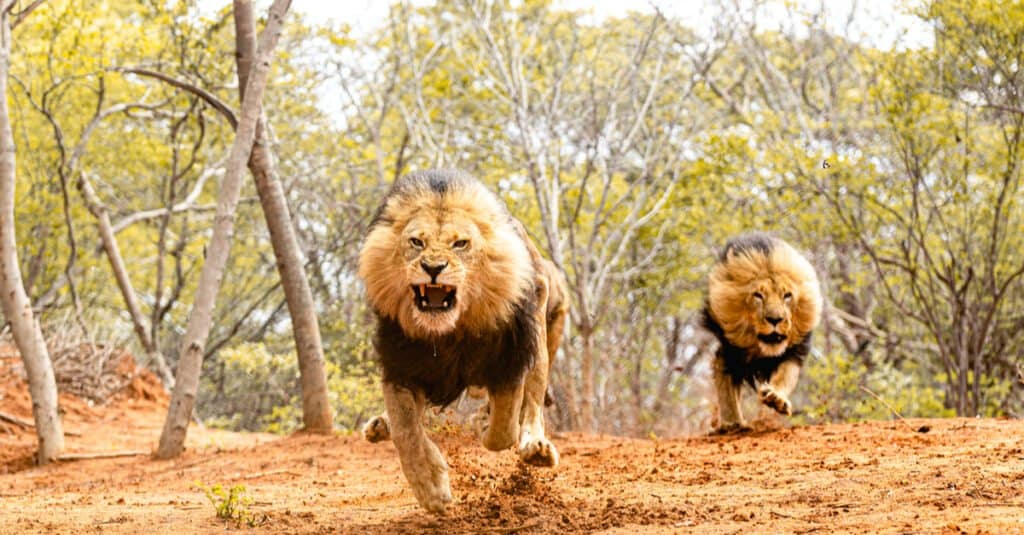
Male lions on the hunt
©Blue Slate Films/Shutterstock.com
Lions are very social animals and biting can be used to communicate and interact with each other. As cubs, they will bite and play with adult lions. Playing helps cubs learn how to hunt and defend themselves. Unlike other big cats, lions are social and live in groups together. Cubs will bite and play with other cubs and adult lions to learn how to interact with the pride.
Each pride has an alpha lion, which for many people is a strong representation of leadership. The alpha lion’s job is to protect from predators and mate to create cubs for the group. Once a lion gets old he gets replaced by a younger and more capable lion. The alpha must be able to defend its group, and oftentimes that means to kill other animals and lions with its powerful bite.
Alpha lions have one of the strongest bites of each pride, as they are the largest. Alpha lions will bite other males to show dominance. In a large group, there may only be around 3 male lions. If a new alpha takes the place of an older one, they may bite and kill the cubs of the old group leaders.
How Does A Lion’s Bite Force Compare With Other Big Cats?
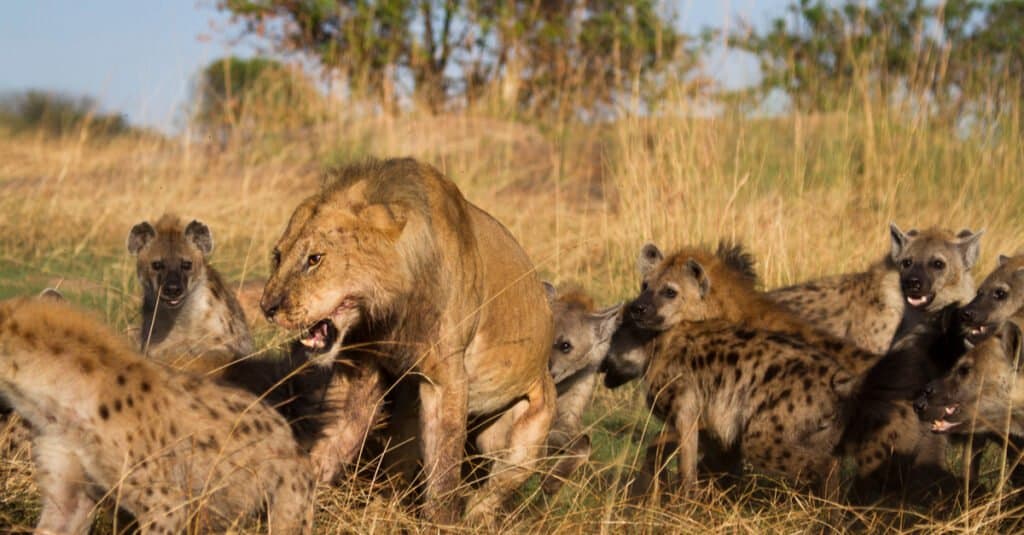
A lion surrounded by a pack of
hyenas
©Mark Sheridan-Johnson/Shutterstock.com
Lions create less power with their bite compared to many other animals, and there are plenty of big cats who are able to produce a stronger bite than the lion. Jaguars have a stronger bite force than all other big cats and are able to produce around 1,500 psi with their bite. Tigers are also another species with a stronger bite and are able to produce around 1,050 psi.
Lions do have one of the strongest bite forces but that is not what makes them special. Their social skills and ability to hunt in numbers make them one of the best predators and unique amongst big cats.
The photo featured at the top of this post is © Eric Isselee/Shutterstock.com
Thank you for reading! Have some feedback for us? Contact the AZ Animals editorial team.






